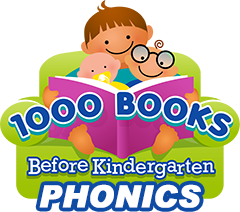Research continues to show that the best phonics programs, such as the 1000 Books Before Kindergarten Phonics program use an integrated approach to learning. It is a myth that reading is primarily about decoding letters into sounds. While decoding letters is important, understanding what the words mean is just as important as learning letter sounds. Children must learn to apply their letter decoding skills in daily reading activities to truly become a proficient reader.
When teaching a child to read, parents and teachers should work with the child daily. The best methods include combining an organized lesson plan along with on-the-spot opportunities for a child to use his or her phonics skills. Letter-sound combinations are arbitrary and difficult for children to learn on their own. Without regular sessions of phonics learning a child may fail to acquire sufficient phonics knowledge to quickly become a proficient reader.
The most effective phonics learning comes from one-on-one instruction with a child. Still, research has shown that, “digital devices can be used by young children in classrooms independently of their teacher to effectively support the acquisition of constrained knowledge such as letter-sound mapping, via drill and practice type gaming applications.” While one-on-one instruction is optimal, some use of digital devices can offer opportunities for self-directed, independent and individualized learning
The key is to follow a comprehensive phonics program, such as 1000 Books Before Kindergarten Phonics and then look for opportunities outside of the structured course to reinforce what your child is learning. Wherever and whenever there are words, there is an phonics learning opportunity.

